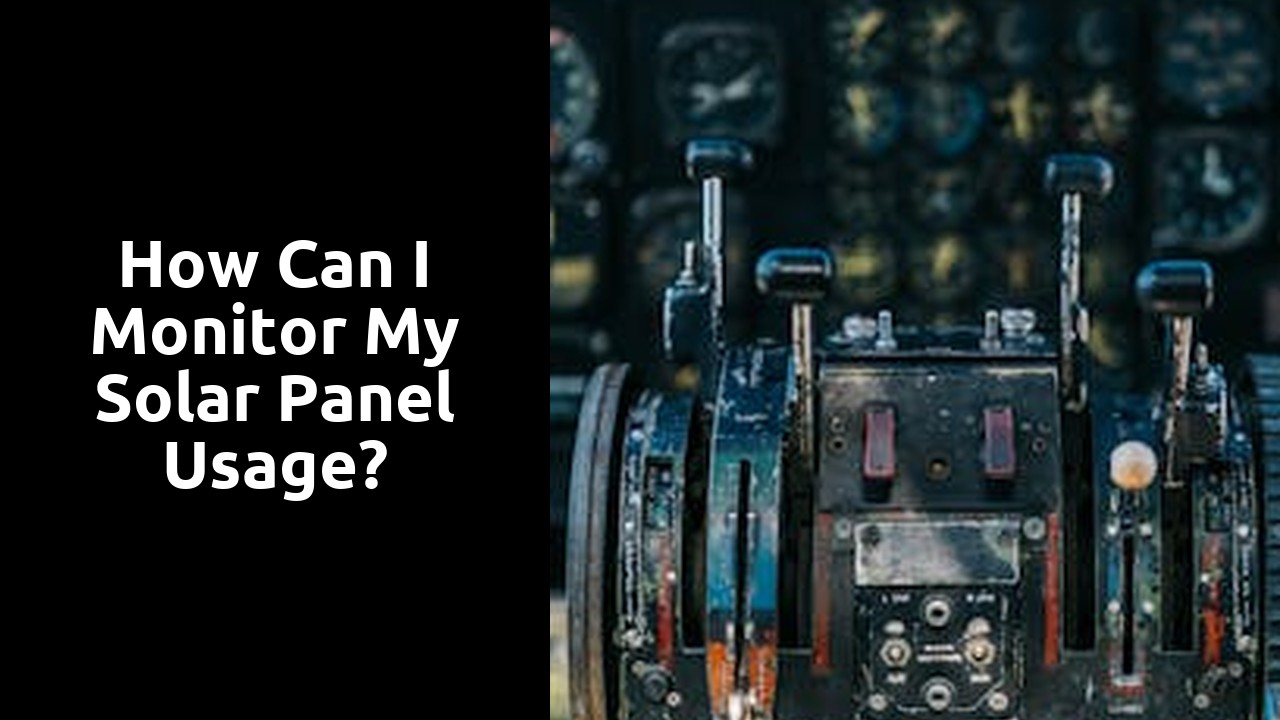 How do I know which retailer offers the best solar feed-in tariff in Queensland?
How do I know which retailer offers the best solar feed-in tariff in Queensland?How can I get involved locally in solar energy initiatives in Queensland?
Best Practices for Monitoring Solar PanelsThe future of solar feed-in tariffs in Queensland is likely to see continued evolution, with potential changes in rates, incentives, and regulations to encourage greater adoption of solar energy in the state.
One of the essential components of maintaining a solar panel system is diligent monitoring. Regularly checking the performance of each solar panel ensures that any issues are promptly identified and addressed. Through Some trends and predictions in Queensland regarding solar feed-in tariffs include the increasing popularity of, operators can effectively track the efficiency of their system and take proactive measures to enhance its performance. battery storage solutions, the emergence of innovative pricing models, and the ongoing shift towards renewable energy sources.
Implementing a detailed monitoring system not only helps in identifying potential failures but also aids in ensuring optimal energy production. By carefully monitoring each solar panel, operators can gain valuable insights into the system's overall health and make informed decisions to maximise its output. Ultimately, proactive Solar Panel System Monitoring leads to increased efficiency and longevity of the solar panel system.How does energy storage, such as batteries, impact solar feed-in tariffs?
Implementing Regular InspectionsEnergy storage technologies, such as batteries, can impact solar feed-in tariffs by enabling households to store excess solar energy for later use instead of feeding it back into the grid, potentially affecting the financial benefits of feed-in tariffs."""
Regular inspections are a crucial aspect of maintaining the efficiency and functionality of your solar panel system. Conducting routine examinations allows you to identify any potential issues early on, ensuring that your system continues to operate at its optimal capacity. By implementing a scheduled inspection routine, you can proactively address any issues that may arise, preventing more significant problems down the track.
During these inspections, it is essential to thoroughly assess each solar panel within your system. By conducting a detailed examination of individual panels, you can identify any signs of wear and tear, damage, or malfunctions that may affect the overall performance of your system. This meticulous approach to inspection ensures that no potential issues go unnoticed, allowing for timely repairs and upkeep to maintain the efficiency and longevity of your Solar Panel System Monitoring.
Integrating Monitoring with Maintenance
helps in ensuring that your solar panel system continues to operate efficiently and effectively.
Integrating monitoring with maintenance also allows you to track the overall performance of your solar panel system over time. By analysing data collected through the monitoring system, you can identify patterns and trends that may indicate potential issues or the need for specific maintenance tasks. This data-driven approach helps in optimising the performance of your solar panel system and maximising its lifespan, ultimately leading to long-term cost savings and improved energy production.
Ensuring LongTerm Performance
For solar panel systems to perform optimally over the long term, regular monitoring is crucial. Solar panel system monitoring allows for the detection of any issues or inefficiencies promptly, enabling timely repairs and maintenance to be conducted. By consistently monitoring each solar panel within the system, proper functioning can be ensured, ultimately extending the lifespan of the entire system.
e performance of each solar panel individually. This allows for better tracking of efficiency and early detection of any issues.
How often should solar panels be inspected for monitoring purposes? {{related_areas}}
It is recommended to conduct regular inspections of solar panels at least once or twice a year to ensure proper functioning and identify any potential problems early on.
How can monitoring be integrated with maintenance activities?
By integrating monitoring systems with maintenance schedules, you can ensure that any issues identified through monitoring are promptly addressed, thus maintaining the optimal performance of your solar panels.
How does monitoring contribute to ensuring long-term performance of solar panels?
Monitoring helps in detecting performance issues or malfunctions early, allowing for timely interventions that can prolong the lifespan and efficiency of solar panels over the long term.
Can monitoring enhance the warranty of solar panels?
Yes, by implementing monitoring systems, you can provide documented evidence of the performance of your solar panels, which may help in validating warranty claims and ensuring coverage for any potential issues.
How does monitoring help in validating manufacturer claims about solar panels?
Monitoring systems provide real-time data on the performance of solar panels, allowing you to compare the actual results with the manufacturer's claims, thus validating the accuracy of their specifications and promises.
Related Links